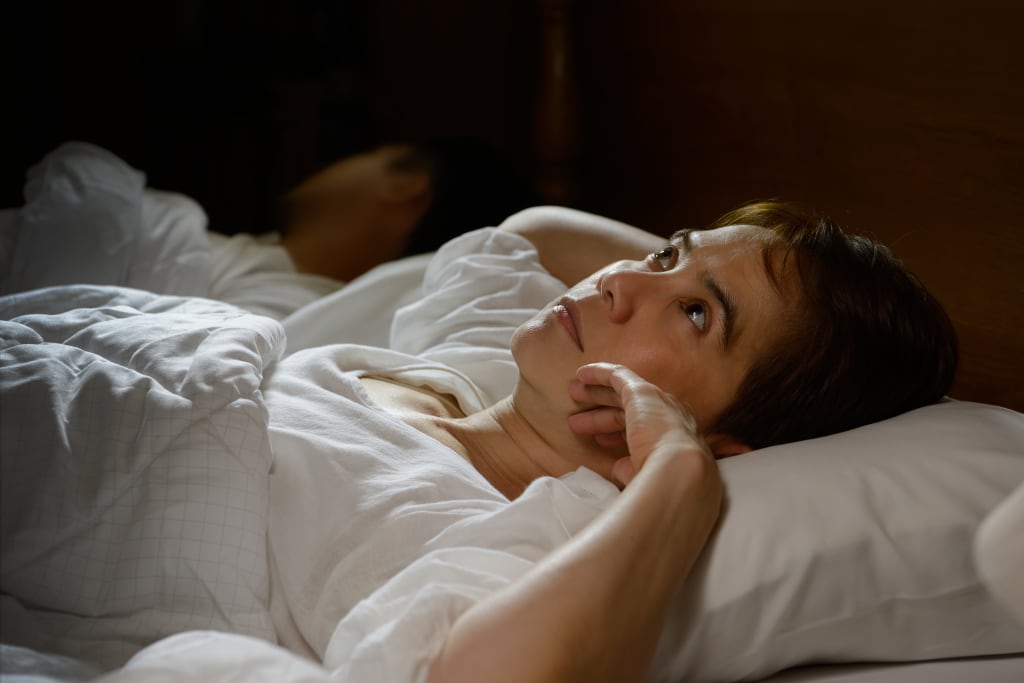
Most people have woken up from a nightmare in the middle of the night, sweaty, scared and momentarily convinced that the monster under our bed is all too real.
Most people proceed to come to their senses and fall back asleep, knowing their nightmare was a strange apparition that goes away as mysteriously as it comes.
But imagine if it came again. And again. And again.
Enter nightmare disorder—a sleep condition characterized by recurrent, vivid dreams that induce feelings of terror, stress or severe discomfort. This is not your run of the mill dream about being late for class, but something much more serious. Living with nightmare disorder is like being haunted by Freddie Krueger, a looming specter that threatens to make sleep a terrifying experience.
Read on to learn what we know about the symptoms, causes and potential treatments of nightmare disorder.
Symptoms of Nightmare Disorder
It’s probably redundant to acknowledge that nightmares are at the heart of nightmare disorder. Most people are familiar with the characteristics of a nightmare. They are dreams in which we experience extreme fear, stress, terror or any other very unpleasant feeling. Typically we wake from these dreams with a start or recall them with bitterness in the morning. But they are fleeting most of the time.
With nightmare disorder, these unpleasant events happen with alarming frequency. Essentially, nightmares become a disorder when they occur so often that it begins to affect a person’s waking life.
According to the Mayo Clinic, these are the symptoms that set nightmare disorder apart from simply having a nightmare:
- Frequent occurrences
- Major distress or impairment during the day, such as anxiety or persistent fear, or bedtime anxiety about having another nightmare
- Problems with concentration or memory, or you can’t stop thinking about images from your dreams
- Daytime sleepiness, fatigue or low energy
- Problems functioning at work or school or in social situations
- Behavior problems related to bedtime or fear of the dark
While nightmares are common, it is relatively rare that people develop diagnosable nightmare disorder at all. The American Academy of Sleep Medicine (AASM) reports that only 4 percent of all people suffer from nightmares so severe as to be diagnosed with nightmare disorder.
The Causes of Nightmare Disorder are Mixed
Nightmares occur from a complex web of factors. The AASM lists the following conditions as possible triggers or factors that can increase the chance of having regular or intense nightmares:
- Another sleep disorder
- A medical condition
- Medication use (especially antidepressants, medicine for Parkinson’s disease and medicine for hypertension)
- A mental health disorder such as depression, anxiety, stress or post-traumatic stress disorder
- Substance abuse
- Poor sleep hygiene (irregular, poor sleep)
- High stress levels
Additionally, there is some evidence that adult women experience nightmares more often than men do. However, researchers also note that women tend to be more open and honest when discussing their dreams.
Children are also more prone to nightmares than adults. While it’s rare that children get diagnosed with nightmare disorder, they are much more likely to suffer from severe nightmares that interfere with sleep.
Nightmare Disorder is a form of Parasomnia
Parasomnias are a very specific type of sleep disorder characterized by unconscious, unintentional and otherwise unwanted physical acts that occur when we sleep. They have also been called “partial arousals,” for they put our bodies and minds in the strange area of showing signs of being awake and asleep at the same time.
Other parasomnias include sleepwalking, sleep terrors, REM behavior disorder, sleep paralysis, confusional arousal and more. While each of these is slightly different, they group them based on what part of the sleep cycle they take part in.
Nightmare disorder, along with sleep paralysis and REM sleep behavior disorder, takes place during the rapid eye movement (REM) stage. During this time, vivid dreams are common; as a result, many of the parasomnias occurring during REM sleep are linked to dream-like experiences. Like dreams, but unlike non-rapid eye movement (NREM) parasomnias, REM parasomnia episodes can often be recalled the next morning.

Diagnosis and treatment options
There is no specific test or metric that a doctor will use to diagnose patients with nightmare disorder. If you feel that nightmares are severely disturbing your sleep, your doctor will likely spend time talking through your symptoms and possibly giving you a physical exam. If they believe the cause of your nightmares may be related to another underlying sleep disorder, it is common to prescribe an overnight sleep study. This will help clinicians offer an accurate diagnosis of your sleep habits and rule out any confounding sleep disturbances.
If you are diagnosed with nightmare disorder, there is treatment available to many patients. Some of the most commonly prescribed treatment options include:
- Treating underlying medical conditions: Since nightmare disorder is often seen in conjunction with other medical conditions, treating underlying problems can greatly decrease the frequency and intensity of nightmares. Mental health issues like stress, anxiety, depression and especially PTSD are commonly cited as factors. Which leads to the development of nightmare disorder.
- Changing sleeping habits: Improving sleep hygiene can help reduce the chance that nightmares will occur. Making sure to consider how any recent changes made to diet, lifestyle and schedule will affect sleep is a good first step. Avoid consuming media or any disturbing content close to bedtime, as well as caffeine and alcohol. If you find the themes of your nightmares to be related to any content you are consuming, try avoiding it completely.
- Therapy: Some therapies have been recommended for the treatment of nightmare disorder. Cognitive-behavioral therapy has proven effective, especially for patients suffering from PTSD. Image rehearsal therapy, in which individuals are coached on how to replace negative images with positive ones in their dreams, also shows promise. Some evidence even suggests hypnosis may improve prognosis.
- Medication: Certain medications are sometimes prescribed to patients to help alleviate the symptoms of nightmare disorder. Talk to your doctor about what may be right for you and take care to discuss any current medication you already take for other conditions, as these may conflict with new medications or be what’s exacerbating your nightmare disorder in the first place.
Leave a Reply